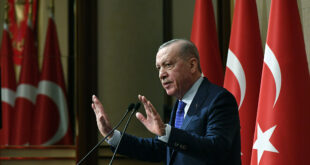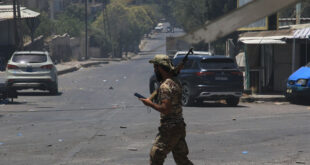
Conflict zones in the Middle East (West Asia) and Afghanistan are becoming rallying points for foreign fighters driven by jihadi fervour. Even in Gaza, where geographical and political particularities inhibit boots on the ground, it has not diminished their intent or agency.
This mirrors earlier situations in Chechnya as well as in Syria-Iraqand Afghanistan itself, where thousands of ideologically indoctrinated foreign fighters were drawn into complex conflicts, framed through the lens of religion. Jihadi groups are adept at manipulating tales of suffering and distorting religion to fill their ranks. Lured by the promise of being instrumental in a greater cause, individuals in places as far removed as France and Maldives are volunteering to fight for causes and conflicts they know little about. At its height, it was estimated that close to two-thirds of ISIS fighters were foreign belligerents.
Dissimilar impacts
Yet, Jihadi propaganda has seemingly impacted some states more than others. A striking pattern emerges upon examining the demographics of these volunteers, with a vast majority having origins in either the heartlands of traditional Islam in the Middle East and Central Asia, or from within immigrant groups from the prosperous, liberal bastions of the West. Benmelech and Klor’s 2016 study on ISIS’s foreign fighters indicates that more than half of them originated from Muslim-majority countries.
However, what is truly revealing is that over a quarter came from Western nations. The statistic becomes even more instructive when relative population sizes are taken into account. Adjusted to population, non-Muslim states such as France and the United Kingdom (UK) accounted for close to 26 fighters per million and 12 fighters per million respectively, as compared to large Muslim states such as Indonesia and Egypt, which accounted for three fighters per million and six fighters per million respectively. In sharp contrast are non-Muslim states with significant Muslim populations such as India and Singapore, and Muslim-majority states such as the United Arab Emirates (UAE), Oman, Bahrain, and Malaysia, which exhibited markedly low levels of recruitment. This raises the question of what makes some societies more susceptible than others. It is all the more pressing at a time when Muslim lands across a wide arc are in a state of turmoil, providing fodder for jihadi groups to reinforce their victimhood narratives built around faith-based persecution.
Between Ummah and hybridity
Within certain parts of the Muslim world, where faith permeates facets of everyday life, a vulnerable segment finds itself easily drawn to incendiary jihadi rhetoric. The susceptibility could be attributed to reasons ranging from globalisation to pan-Islamism rooted in the common cause of ‘Ummah’—the global Muslim collective. Pan-Islamism, a political construct, emphasises the oneness of the ‘Ummah’, and seeks to foster a strong deterritorialised communal identity. This often escalates into self-identification with struggles framed through the lens of religion.
On the other hand, hybrid influences on Islam are leading to a resurgence of rigid, doctrinaire interpretations within the more puritanical sections of the populace. This is cultivating fertile ground for jihadi ideologies, which they see as sui generis in their crusade to safeguard ‘religious purity’. The Islamic foundation of the state often provides a convenient pretext for such radical self-justifications, lending a veneer of legitimacy to these dangerous rationalisations.
Perils of non-assimilation
In the West, it traces to challenges with immigrant assimilation. Immigrant communities struggle with assimilation, a process that, left to free agency, could span between three-four generations and several decades. Each generation navigates this journey uniquely. First-generation immigrants typically seek economic opportunity. Their sense of identity, however, remains deeply rooted in their homelands. With close familial ties and cultural bonds, their migration is typically a voyage towards hope. The second generation, however, finds themselves in an identity limbo.
On the one hand, they have little familial or cultural connection with their ancestral lands. On the other, they feel alienated in their adopted homelands due to prejudices and cultural differences. Caught between two worlds, they struggle with defining who they are. It is in their quest to belong that Jihadi propaganda, with its loud and clear calls to action, finds its unerring mark. Wielding promises of a noble cause and a place in a schema larger than life, it gives them power and purpose, filling their identity voids.
From the radical English-speaking cleric Anwar al-Awlaki, Al-Qaida’s recruiter and propagandist-in-chief in the west, and Hasib Hussain, the youngest among the 7/7 London bombers to the Kouachi brothers of Chérif and Saïd responsible for the Charlie Hebdo attack in Paris in 2015—all were second-generation immigrants who struggled to assimilate. Yet, despite the positive correlation between non-assimilation and radicalisation, Western societies have been loath to address the issue. This situates in a misjudged conviction that immigrants should be afforded the liberty to assimilate at their own pace for comfort with the integration process.
India’s resilience
In India, the religious identity is subsumed by a national identity, where ‘being Indian’ takes precedence over sectarian affiliations. The Indian experience grounds the Indian Muslim identity in history and heritage more than any overt religiosity or adherence to codes of faith. The harmonious interplay between Sufi saints and the Bhakti movement, for instance, birthed a syncretic spiritual ecosystem. In the south, the Hindu Zamorin rulers nurtured a land where Muslims and Hindus not only freely intermarried but also maintained their distinct traditions. Vavar, a Muslim saint, receives ritualistic respect from the devotees of the Hindu god Ayyappa, who visit his shrine in millions each year. Sai Baba of Shirdi, Moinuddin Chishti of Ajmer, Sant Namdev of Narsi, and Neem Karoli Baba of Kainchi, among several others, have millions of followers across the religious spectrum. Such multi-faith spaces act as melting pots of cultures, values, and beliefs nourishing a syncretic social fabric, reinforcing collective identities essentialised by accommodativeness and inclusion. This amalgamation dilutes the pull towards insular identities. Importantly, in India, it has also resulted in a dynamic where vigilance against radicalisation has become a collective community endeavour, bolstering resilience against jihadi indoctrination.
The Indian experience grounds the Indian Muslim identity in history and heritage more than any overt religiosity or adherence to codes of faith.
Complementing these are the visible and quantifiable elements. On the one hand, there are assertive policy interventions focused on capacity building and economic upliftment. Initiatives such as Pradhan Mantri Virasat Ka Samvardhan (PMVIKAS) and the supportive financial mechanisms offered by agencies such as the National Minorities Development and Finance Corporation (NMDFC) represent this aspect. These efforts are specifically directed towards the community’s most marginalised and undereducated segments, likely most susceptible to jihadi rhetoric. On the other hand, there are the narratives of prosperity and achievement underscored by the visibility of Muslim success in Indian society—be it in government, business, entertainment, finance, or politics. These invalidate the argument of disenfranchisement, providing little on-ground validation for jihadi rationalisations. Consequently, despite Muslims comprising approximately 14 percent of India’s population, representing over 10 percent of Muslims worldwide, the community has been unreceptive to jihadi propaganda. It bears testament to the power of India’s cohesive national identity in deterring divisive rhetoric. Ruskin Bond in his 2002 essay, On being an Indian, aptly captures the embodiment of the Indian identity when he writes, “Race did not make me one. Religion did not make me one. But history did. And in the long run, it’s history that counts.”
National identity as a bulwark
National identity encompasses self-categorisation and the experiences associated with it. Substantive national identities such as India’s, which engender positive self-categorisation, have proved their ability to degrade the appeal of destructive ideologies. The varying susceptibility to radicalisation in different societies underscores the significance of robust national identities that eclipse narrow, rent-seeking ideologies. The West could borrow from experiences such as India’s that build societal resilience, and Singapore’s, which accelerates that process. From carefully curated school curricula that showcase the culture of its diverse populace to an Ethnic Integration Programme that breaks communal ghettos, Singapore has successfully cultivated cross-cultural understanding towards a fortified national identity in a compressed timeframe. Such efforts have dented the appeal of jihadi propaganda, with few Singaporeans joining the ranks of foreign fighters, despite its swelling immigrant population.
As old battlegrounds fold, radicalised fighters return home to varying receptions. However, much like the viper that bit the farmer who saved it from the winter chill in Aesop’s fable of The Farmer and the Viper, it is only a matter of time before some of these returning fighters turn on the very communities that seek to rehabilitate them, creating new battlegrounds back home. Estimates suggest that anywhere from 11 percent to 26 percent of returning fighters revert to terrorism. The quest for identity remains at the heart of the challenge—a reminder of the pressing need for nations to build stronger, more inclusive identities that can withstand the allure of divisive ideologies. As we ponder the future in the fight against religious extremism, one question remains pivotal: How can nations build resilient, inclusive identities that resist the siren calls of radical ideologies? How we address it will determine the course of our collective ability to foster a future that transcends the narrow confines of sectarianism and hate.
 Eurasia Press & News
Eurasia Press & News




